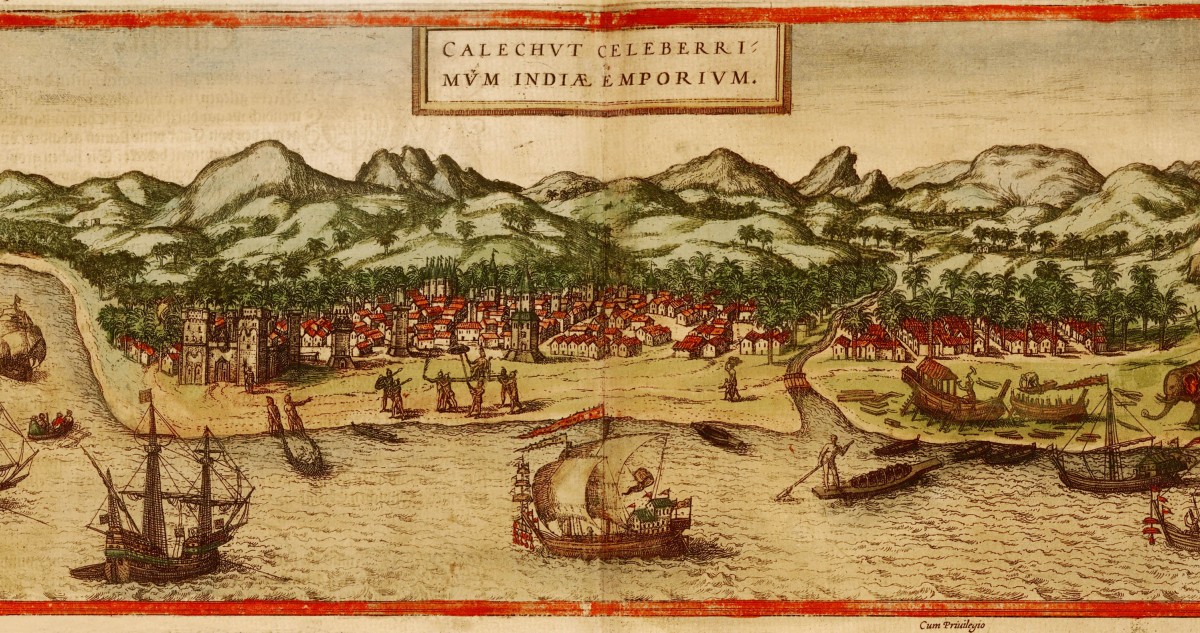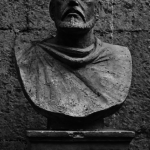“In the Ancient World the sea always linked rather than divided people.” – Sam Christmas
The sea was central to life in the Ancient World. On account of this, it would not be unreasonable to accept that the sea was involved in most aspects of life, including cultural intercourse between different civilisations. This interaction assumes the form of trade and colonisation, as well as being a medium for hostility through conflict and economic rivalry. The case studies that are being investigated in this essay will provide a thorough overview of the sea’s role. Firstly, the Phoenician Civilisation will be examined, as well as the example of the Punic Wars in relation to the contest for maritime hegemony in the Western Mediterranean, before finally exploring the division between the Hellenes and the rest of the Classical World. ‘Linked’ will be defined as the mechanism of interaction between two peoples that provided further developments in their relationship. The sea provided the opportunity for interaction in the ancient world, however, it would be inaccurate to suggest that the sea always linked people as it could act as both a cultural and also a political obstacle.
The Phoenicians were a thalassocratic civilisation who flourished through maritime trade between c.1500 to 332 BCE. The extent of their success in this regard can be suggested by the honorific title of “Princes of the Sea” by the Hebrew tribes. These people originated from modern day Lebanon and they colonised the Mediterranean and connected it through their commercial exploration. Amongst these colonies one can mention Carthage, Cyprus, Malta, Cadiz and Rhodes as being some of the more recognisable. The artificial construction of Phoenicia had economic and political influence from Spain to Syria. Yet such influence was only achieved through the medium of the sea. The geographical relief of Lebanon forced them to expand into the sea for Phoenicia was situated between the Mediterranean and the mountain ranges of Lebanon and Anti-Lebanon. However, they were fortunate enough to possess an abundance of timber in the shape of cedar forests on Mount Lebanon. This discovery was amplified in value by the fact that timber was scarce in the Mediterranean. With this ability to produce high quality sailing vessels, the Phoenician sailors “affronted the perils of the Mediterranean.”
These trade networks which began to develop in the eleventh and tenth centuries BCE required outposts (emporeia) in ordered to operate with greater ease. Kition in Cyprus was colonised and an emporeion was established with the islands’ natives. It was this place which was the epicentre of the development of the Ancient Greek language as the Phoenicians passed on their alphabet (an early form of Ugarit script) around 950 BCE. This portrays the intimacy between the two civilisations as the “[Greeks] were taught these letters by the Phoenicians and adopted them… continuing to refer to them as the Phoenician characters – as was only right, as the Phoenicians had introduced them.” This cultural exchange was only possible with the sea as the medium for this interaction. Therefore, it would in accurate to suggest that in this regard the sea linked these two peoples.
As well as providing the foundations for the development of the Ancient Greek language, the Phoenicians established a trade network that was adopted into Hellenic life. The creation of widespread series of emporeia, such as the trade post in Athens’ future port of the Piraeus in 600 BCE, was the basis of the creation of the Mediterranean that was connected by the Phoenician trade. It was for this reason that the Phoenicians were called the “middle men of the ancient world”. The spread of the Phoenician’s commercial influence can be inferred from its place in epic literature. In the Odyssey, Telemachus receives a gift from Menelaus of a bowl of solid silver with a gold rim. This gift originally came “Phaedimus, the heroic king of Sidon”, a Phoenician monarch. As well as this, there are other examples such as the royal robes of Queen Hecuba, which were the work of Sidonian women. Also the Phoenicians had an impact upon Hebraic history as the man responsible for the creation of Solomon’s temple was Hiram, “a man of Tyre, skilled to work in gold, and in silver, in brass, in iron, in stone and in timber, in purple, in blue, and in fine linen and in crimson”. The fact that a Phoenician was commissioned to adorn Solomon’s temple with splendour is testament to the skill of the Phoenician culture, an attribute brought about by their maritime trade.
This interaction between the Jews and the Phoenicians, whilst it did not transcend a maritime barrier, was enhanced by the Phoenicians’ prestige which was achieved by maritime trade as it allowed access to a huge variety of natural resources. The sea gave them an advantage because “as sailors the Phoenicians were unmatched.” Therefore they were able to implement maritime trade so effectively as an advantage over other merchants. Therefore, the sea gave them the ability to link with other civilisations in a way that was unparalleled before them. The Phoenicians as a civilization used the sea as a medium for linking them to other civilisations for commercial motivation. Yet, it was these interactions which allowed the Mediterranean to develop into one united geographical and cultural body rather than a series of isolated peninsulas. Therefore, their use of the sea acted as a force for linking the ancient world rather than division.
The example of the Punic Wars between Carthage and Rome might seem like an example of division, yet, while this is accurate, the fact that two cities came into such a volatile relationship can be attributed to the sea. Therefore, the sea both linked and divided the Carthaginians and the Romans.
The conflict that developed between the two republics was one of a conflict of hegemony between the two factions’ spheres of influence. The area in question is the Western Mediterranean and more specifically, at least for the First Punic War, the island of Sicily. The two states had previously been allies against Pyrrhus of Epirus (280-275 BCE) in his attempt to control Southern Italy and Sicily. However, after his defeat the former allies lost their only unifying force: a common enemy. This suggests that it was control of the sea, and thus the sea itself, that was the source of the aggression between the previously friendly states. The context of the conflict can be traced to the fact that “for by as much as the power and prosperity of Carthage had been earlier than that of Rome, by so much had Carthage already begun to decline; while Rome was exactly at her prime.” Therefore, control of the Western Mediterranean was the medium for the conflict between the two empires. By the middle of the third century BCE, Carthage, a former colony of the Phoenician city of Tyre, had extended its mercantile empire to the Western side of Sicily.
The proximity of a Carthaginian presence so close to the Italian peninsula was threatening to the fledgling republic. The Romans, in turn, desired to expand their sphere of influence over Sicily and when the Marmetines (mercenaries of Italian origin who were in the employment of the Tyrant of Syracuse before they settled on Sicily) asked for a Roman military intervention against the encroaching presence of Carthaginian garrisons. Indeed, also like their predecessors the Phoenicians, the Carthaginians must have thought “that if trade routes to Europe were to be maintained, the Punic presence in Spain [and Sicily] must be strengthened.” Therefore, the Carthaginians felt that their economic strength could only maintained through the presence of military garrison in order to protect shipping lanes. On account of this, the sea was central to the development of the Punic Wars as the Carthaginian’s empire was a mercantile one which depended upon maritime trade. As division over dominance over the sea was at the heart of the wars, it must be suggested that the sea acted as a mechanism for division rather than one for linking.
However, it would be inaccurate to suggest that the sea did not also link the two civilisations because the sea was the source of the two states’ division. Therefore, a desire for hegemony over the sea linked them as, after defeating Pyrrhus of Epirus the sea became the focus of both Rome and Carthage. Both sides started to develop their navies in order to accommodate the more maritime focused warfare. The “Carthaginians naturally are superior at sea both in efficiency and equipment, because seamanship has long been their national craft, and they busy themselves with the sea more than any other people” so therefore they had the initial advantage. In order to match the Punic navy, the Romans had to quickly develop a fleet. Such was the rapid development of the naval forces that “the total naval forces engaged were, as I mentioned above, on one occasion more than five hundred quinqueremes and, on a subsequent one, very nearly seven hundred.” Therefore, this fixation on control of the sea was common to both the Carthaginians and the Romans and made them more similar in that regard. As well as the increased similarities of the two republics during the Punic wars, the aftermath of the wars led to a linking effect. With Carthage decisively destroyed in the Third Punic War, Rome was left dominant in the Western Mediterranean; this dominance set in motion the events which led to the formation of the Roman Empire, an engine for linking huge areas of Classical Europe and the Near East.
If taken with hindsight, the Punic Wars allowed unity through Roman imperialism and therefore were an example of the sea acting as a medium for linking. However, the conflict of the war is evidence to the division that resulted from a desire to control of the sea. Therefore, the sea allowed both division and linkage in the Ancient World.
The division between the Hellenes and the others is the final case study being investigated. The word “barbaros” denotes a person who does not speak Greek. Therefore, dialect was an integral part of the division between Greeks and Non-Greeks. The geographical aspect of the difference must be a significant factor for the division in cultures and the sea must play an important role in that geographical division. The difference between the Greeks and the barbarians is best conveyed by the example of the racial prejudice of the Athenians. The Athenians regarded themselves as an autochthonous people, one that has never changed habitat. It was with this sense of ethnic connection to the land, in particular Attica, that acted as medium for division between Greeks and non-Greeks. The sea was the greatest barrier between civilisations in that sense so it must have been the greats factor that led to ethnic separation. Therefore, the interaction between two different civilisations is a result of the separation caused by the sea. The best example of this is the Persian Wars between the Greeks and the non-Persians. The Hellenes, for the first and last time, were “united in sharing the same kinship and language, with whom we have established shrines and conduct sacrifices to the gods together, and with whom we also share the same way of life.” These similarities in culture were due to the geographical connection between the Hellenic peoples. Therefore, the sea was central to the connection of the Greeks, due to the fact that it acted a barrier from the rest of the Mediterranean, and thus a medium of division between them and the rest of the Mediterranean.
However, this hypothesis is subverted by the fact that the Greeks did not define themselves by their connection to the Greek peninsula, but by their language and shared ideals. With this definition, the Greek colonies in North Africa and Asia Minor were also part of the Hellenic world. This would suggest that the sea was, in fact, an engine for division, but that Greek identity transcends physical barriers. Ehrenberg supports the hypothesis that Hellas was not so much a geographical term, but an ideal one. However, Weiler opposes this statement and states that “Hellas still existed only where Greeks could retain their liberty in spite of Xerxes” in the context of the Persian Wars. This suggests that Hellas was a geographical-political term as, by the time of the Persian Wars (480-479 BCE), most of the Ionian Greeks had been conquered by the Persian Empire. Thus, when it came to external pressure, only the Greek mainland and peninsulas were considered inherently Greek rather than the colonies which are comparatively temperamental. Therefore, as the sea divided Greece from the Greek colonies, it defined what Greece was. This definition reinforces the notion that in the case of the Greeks and the non-Greeks the sea was a medium of division. The division between Hellenes and non-Greeks can be attributed to the sea as the main medium for division between Greece and the rest of the civilised world in the Classical Era.
In conclusion, the sea did not always link people rather than divide them. There are often examples of the sea being a medium for developing interactions between different civilisations, as with the Phoenicians. Yet, it also acted as an engine for division as it ensured, through geographical separation, that there were differences in identities and cultures, such as demonstrated by the Greek and non-Greek example. It was also an area of conflict in itself, with the Punic Wars being the case study used to demonstrate this. Therefore, while it did often link, it did not do so universally.















Post Comment
You must be logged in to post a comment.